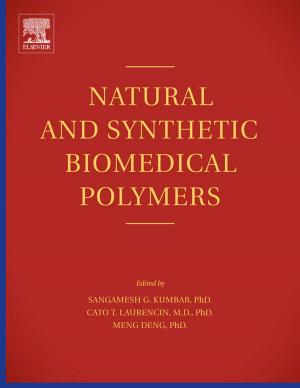Surfaces and Interfaces for Biomaterials
Nonfiction, Science & Nature, Technology, Engineering, Chemical & Biochemical, Material Science| Author: | ISBN: | 9781845690809 | |
| Publisher: | Elsevier Science | Publication: | May 27, 2005 |
| Imprint: | Woodhead Publishing | Language: | English |
| Author: | |
| ISBN: | 9781845690809 |
| Publisher: | Elsevier Science |
| Publication: | May 27, 2005 |
| Imprint: | Woodhead Publishing |
| Language: | English |
Given such problems as rejection, the interface between an implant and its human host is a critical area in biomaterials. Surfaces and interfaces for biomaterials summarises the wealth of research on understanding the surface properties of biomaterials and the way they interact with human tissue.
The first part of the book reviews the way biomaterial surfaces form. Part Two discusses ways of monitoring and characterising surface structure and behaviour. The final two parts of the book look at a range of in vitro and in vivo studies of the complex interactions between biomaterials and the body. Chapters cover such topics as bone and tissue regeneration, the role of interface interactions in biodegradable biomaterials, microbial biofilm formation, vascular tissue engineering and ways of modifying biomaterial surfaces to improve biocompatibility.
Surfaces and interfaces for biomaterials is a standard work on how to understand and control surface processes in ensuring biomaterials are used successfully in medicine.
- Complete coverage on the fundamentals of surface structure and forming to biological and clinical outcomes
- Includes reviews of key surface analytical techniques
- Edited by a renowned expert and written by an international team of authors
Given such problems as rejection, the interface between an implant and its human host is a critical area in biomaterials. Surfaces and interfaces for biomaterials summarises the wealth of research on understanding the surface properties of biomaterials and the way they interact with human tissue.
The first part of the book reviews the way biomaterial surfaces form. Part Two discusses ways of monitoring and characterising surface structure and behaviour. The final two parts of the book look at a range of in vitro and in vivo studies of the complex interactions between biomaterials and the body. Chapters cover such topics as bone and tissue regeneration, the role of interface interactions in biodegradable biomaterials, microbial biofilm formation, vascular tissue engineering and ways of modifying biomaterial surfaces to improve biocompatibility.
Surfaces and interfaces for biomaterials is a standard work on how to understand and control surface processes in ensuring biomaterials are used successfully in medicine.
- Complete coverage on the fundamentals of surface structure and forming to biological and clinical outcomes
- Includes reviews of key surface analytical techniques
- Edited by a renowned expert and written by an international team of authors















